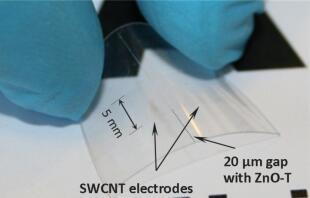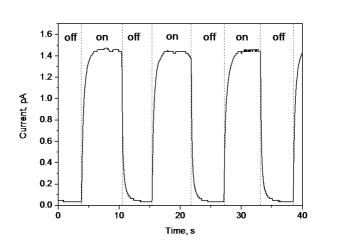Invited Speaker-----Dr. Simas Rackauskas

Research Fellow, Department of Chemistry, NIS Centre of Excellence, University of Turin, Italy.
Speech Title: Catalyst free continuous synthesis of ZnO nanowire
Abstract: In this work we propose a catalyst free continuous method for zinc oxide tetrapod (ZnO-T) synthesis based on the combustion of micron-sized Zn particles in an air atmosphere. A stable geometry of ZnO-T structures produced over a wide synthesis temperature range in gram quantities was obtained. Stable growth conditions were determined by self-sustainable combustion around the Zn particle, as supported by thermodynamic analysis. ZnO-Ts had a high crystallinity, an average leg diameter of 15 ± 5 nm, and a length of 200 ± 100 nm. Obtained ZnO-T structures were applied for efficient transparent flexible sensors.
ZnO-T is an excellent material for UV sensors. UV sensing phenomenon originates from variation of charge carrier density. Under irradiation of UV-light with higher energy than band gap of ZnO, charge carrier density is increased and this reduces the resistance of ZnO tetrapod. UV sensing experiments were made under UV intensity of 30 µW/cm2 at the wavelength of 365 nm. Fig. 3 shows a UV sensor response to the illumination. Initial current 0.032 pA increased to 1.45 pA under the UV illumination, which is 45 fold change. Response time to 90% of current change was 0.9 s. It worth noting, that bending UV sensor did not show any changes.


Figure 1. ZnO-T UV sensor: a) a photo of the sensor; b) sensor response to excitation at 365 nm.
Superior performance of the device, comparing to a single ZnO-T ohmic contact sensors is associated with the multiple barriers. UV-induced desorption of oxygen at the boundary changes the barrier height and narrows the barrier width, and also improves UV sensitivity. Rapid photocurrent response and recovery is related to quick changes in interfacial region, instead of the whole surface [9]. Moreover, the higher the potential barrier, the faster the current recovery [10].
ZnO-Ts provide direct pathways for electron transport, reduce recombination reaction, therefore are interesting for application in DSSCs. Traditional photoelectrode (colloidal TiO2 paste) has numerous grain boundaries, reduced electron mobility. It is expected that ZnO tetrapod film as photoelectrode of nanostructured ordered network with tailored porosity can advance the DSSC performance.
REFERENCES
[1] Rackauskas S., et al. Nanotechnology, 2012. 23, (095502).
[2] Rackauskas S., et al. J. Phys. Chem. C, 2015. 119, (28), pp 16366–16373.



